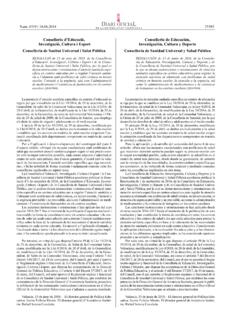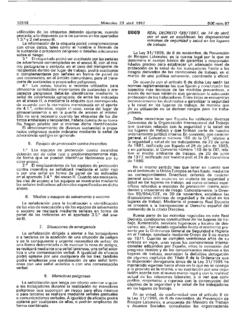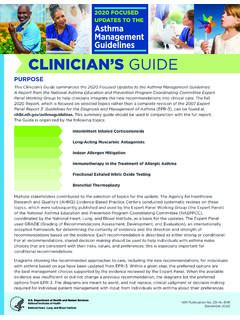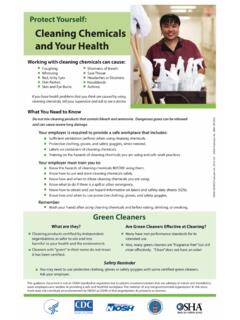Transcription of Global strategic directions for NURSING AND MIDWIFERY
1 Global strategic directions for NURSING AND MIDWIFERY2021-2025educationjobsleadershi pservice delivery2021-2025 Global strategic directions for NURSING AND MIDWIFERYG lobal strategic directions for NURSING and MIDWIFERY 2021-2025 ISBN 978-92-4-003386-3 (electronic version) ISBN 978-92-4-003385-6 (print version) World Health Organization 2021 Some rights reserved. This work is available under the Creative Commons Attribution-NonCommercial-ShareAlike IGO licence (CC BY-NC-SA IGO; ). Under the terms of this licence, you may copy, redistribute and adapt the work for non-commercial purposes, provided the work is appropriately cited, as indicated below. In any use of this work, there should be no suggestion that WHO endorses any specific organization, products or services.
2 The use of the WHO logo is not permitted. If you adapt the work, then you must license your work under the same or equivalent Creative Commons licence. If you create a translation of this work, you should add the following disclaimer along with the suggested citation: This translation was not created by the World Health Organization (WHO). WHO is not responsible for the content or accuracy of this translation. The original English edition shall be the binding and authentic edition . Any mediation relating to disputes arising under the licence shall be conducted in accordance with the mediation rules of the World Intellectual Property Organization ( ).Suggested citation. Global strategic directions for NURSING and MIDWIFERY 2021-2025. Geneva: World Health Organization; 2021.
3 Licence: CC BY-NC-SA (CIP) data. CIP data are available at , rights and licensing. To purchase WHO publications, see To submit requests for commercial use and queries on rights and licensing, see Third-party materials. If you wish to reuse material from this work that is attributed to a third party, such as tables, figures or images, it is your responsibility to determine whether permission is needed for that reuse and to obtain permission from the copyright holder. The risk of claims resulting from infringement of any third-party-owned component in the work rests solely with the disclaimers. The designations employed and the presentation of the material in this publication do not imply the expression of any opinion whatsoever on the part of WHO concerning the legal status of any country, territory, city or area or of its authorities, or concerning the delimitation of its frontiers or boundaries.
4 Dotted and dashed lines on maps represent approximate border lines for which there may not yet be full agreement. The mention of specific companies or of certain manufacturers products does not imply that they are endorsed or recommended by WHO in preference to others of a similar nature that are not mentioned. Errors and omissions excepted, the names of proprietary products are distinguished by initial capital reasonable precautions have been taken by WHO to verify the information contained in this publication. However, the published material is being distributed without warranty of any kind, either expressed or implied. The responsibility for the interpretation and use of the material lies with the reader. In no event shall WHO be liable for damages arising from its use.
5 1 CHAPTERA cknowledgements ..ivExecutive summary ..vBackground ..12 CHAPTERS trategic directions and policy priorities 2021-2025 ..32 .1 Policy focus: Education ..72 . 2 Policy focus: Jobs ..112 . 3 Policy focus: Leadership ..152 . 4 Policy focus: Service delivery ..17 CONTENTS Conclusion ..20 References ..21 Annex . Monitoring and accountability framework ..25iiiContentsAcknowledgements The Health Workforce Department of the World Health Organization (WHO) extends its appreciation to the many individuals and organizations who participated in the web-based Global and regional consultations and provided comments via email, and to Member States for their valuable input on the revised draft document . WHO also gratefully acknowledges the WHO collaborating centres for NURSING and MIDWIFERY , the NURSING Now Global campaign, the International Council of Nurses, the International Confederation of Midwives and other professional organizations for their contributions to the draft Global strategic directions for NURSING and MIDWIFERY 2021 2025.
6 The conceptualization, technical development, and overall coordination of work was undertaken by Carey McCarthy, Health Workforce Department, with support from the WHO Regional Offices, the Department of Maternal, Newborn, Child & Adolescent Health & Ageing, and the Office of the WHO Chief NURSING Officer . Technical oversight and direction was provided by Giorgio Cometto, Unit Head, and by James Campbell, Director, Health Workforce Department . The production of this document has been made possible through funding support from Germany, Norway and the Universal Health Coverage Partnership (WHO, the European Union, Belgium, Canada, France, Ireland, Japan, Luxembourg, and the United Kingdom of Great Britain and Northern Ireland) .ivGlobal strategic directions for NURSING and MIDWIFERY 2021-2025 Executive summary The Global strategic directions for NURSING and MIDWIFERY (SDNM) 2021-2025 presents evidence-based practices and an interrelated set of policy priorities that can help countries to ensure that midwives and nurses optimally contribute to achieving universal health coverage (UHC) and other population health goals.
7 The SDNM comprises four policy focus areas: education, jobs, leadership, and service delivery . Each area has a strategic direction articulating a goal for the five-year period, and includes between two and four policy priorities . If enacted and sustained, these policy priorities can support advancement along the four strategic directions : 1) educating enough midwives and nurses with competencies to meet population health needs; 2) creating jobs, managing migration, and recruiting and retaining midwives and nurses where they are most needed; 3) strengthening NURSING and MIDWIFERY leadership throughout health and academic systems; and 4) ensuring midwives and nurses are supported, respected, protected, motivated and equipped to safely and optimally contribute in their service delivery settings.
8 Policy priorities are expressed through a health labour market lens . This perspective allows for a comprehensive understanding of the forces that drive shortages and surpluses, geographical imbalances, and suboptimal contributions by midwives and nurses in service delivery settings . The suggested implementation approach for the SDNM is an inclusive process rooted in robust data and analysis, intersectoral policy dialogue, and evidence-based decision making on appropriate actions and investments . The monitoring and accountability framework encompasses the data-dialogue-decision making continuum and leverages established reporting mechanisms of WHO Member States . The primary targets of the SDNM are health workforce planners and policy makers, as well as educational institutions, public and private sector employers, professional associations, labour unions, bilateral and multilateral development partners, international organizations, and civil society.
9 The intended impact of the SDNM is that countries fully enable the contributions of midwives and nurses towards the following common goals: primary health care for UHC and managing the coronavirus disease (COVID-19) pandemic; mitigating the health effects of climate change; managing international migration; and ensuring access in rural and remote areas and small island developing states . The SDNM uses the terms midwife and nurse to refer to the distinct occupational groups as described by the International Standard Classification of Occupations in 2008 . WHO appreciates the professional distinction of the midwife and the nurse . The SDNM highlights prioritized issues and shared policy responses that have an impact on both occupations . Actions should be both context- and occupational group-specific to maximize the contributions of midwives and nurses towards greater health workforce efficiency and effectiveness and to improve access to quality health services.
10 VExecutive summaryThe coronavirus disease (COVID-19) pandemic reinforced the universal need to protect and invest in all occupations engaged in a preparedness and response capacity, in public health functions, and in the delivery of essential health services. 1. The United Nations (UN) 2030 Agenda for Sustainable Development and its 17 Sustainable Development Goals (SDGs) set clear targets for health, education, gender equity, decent work and inclusive growth, among others (1). The World Health Organization (WHO) provides Global leadership on SDG 3, which is rooted in the concept of universal health coverage (UHC) and support to WHO Member States to optimize their health workforce towards the achievement of UHC and other health targets (2). 2.
















